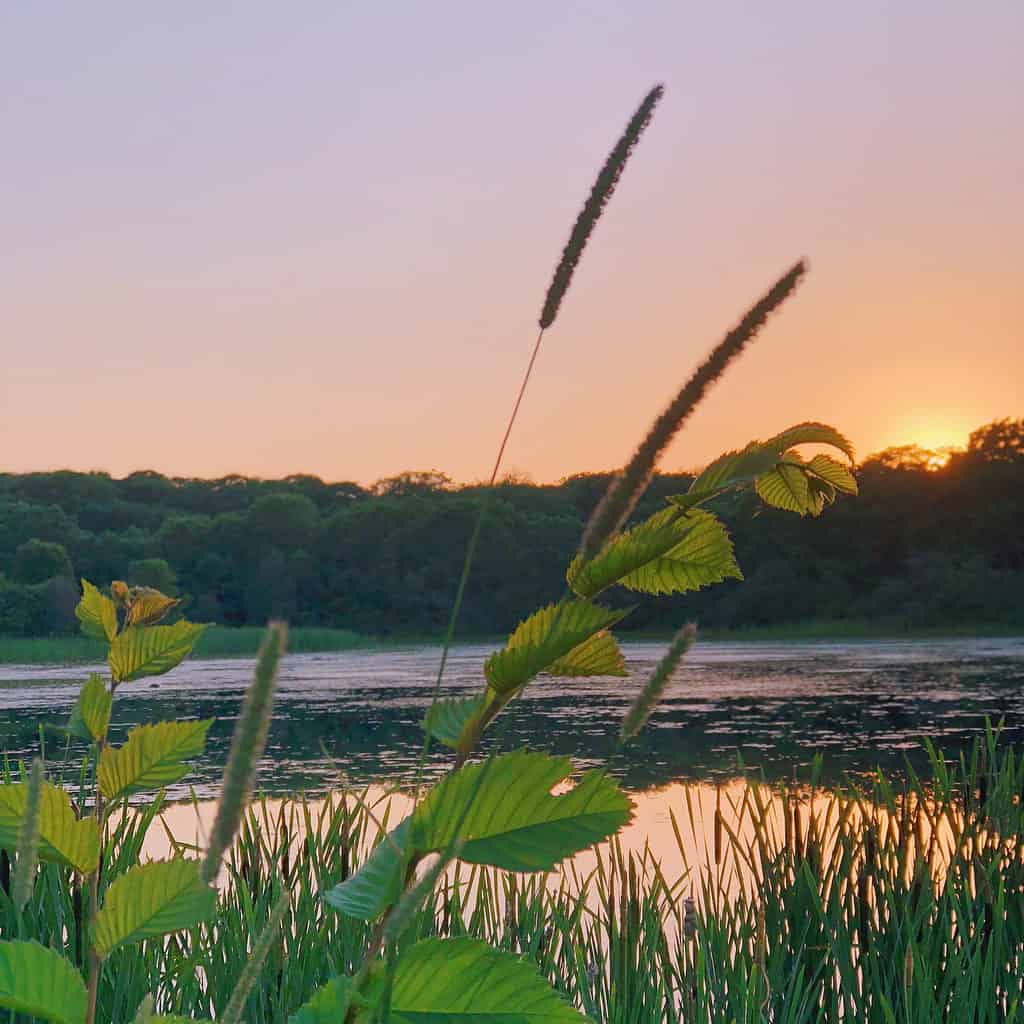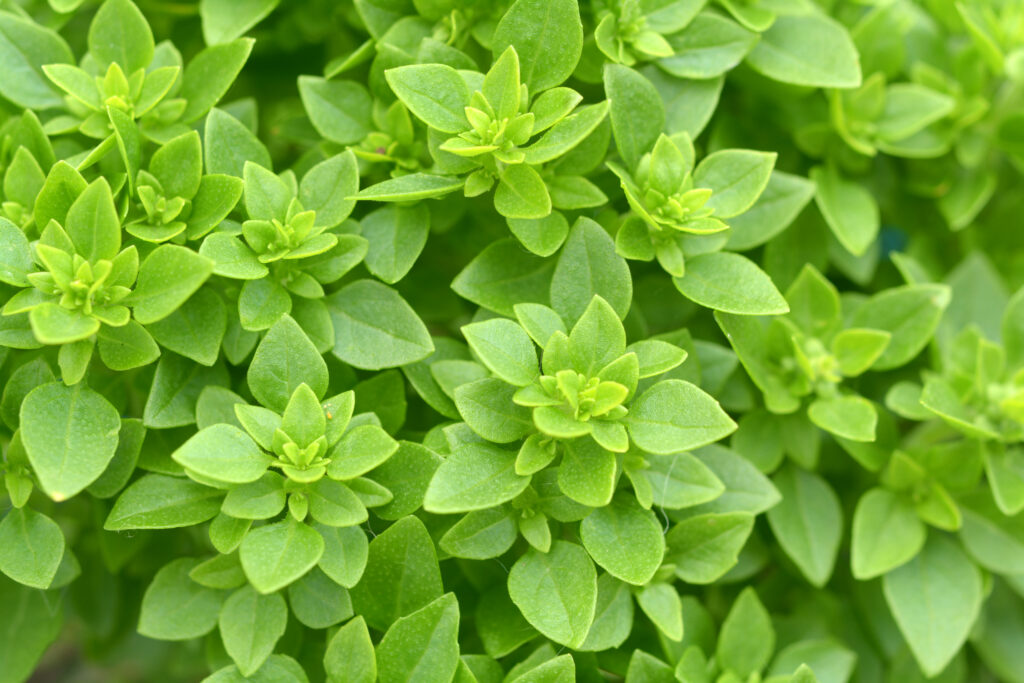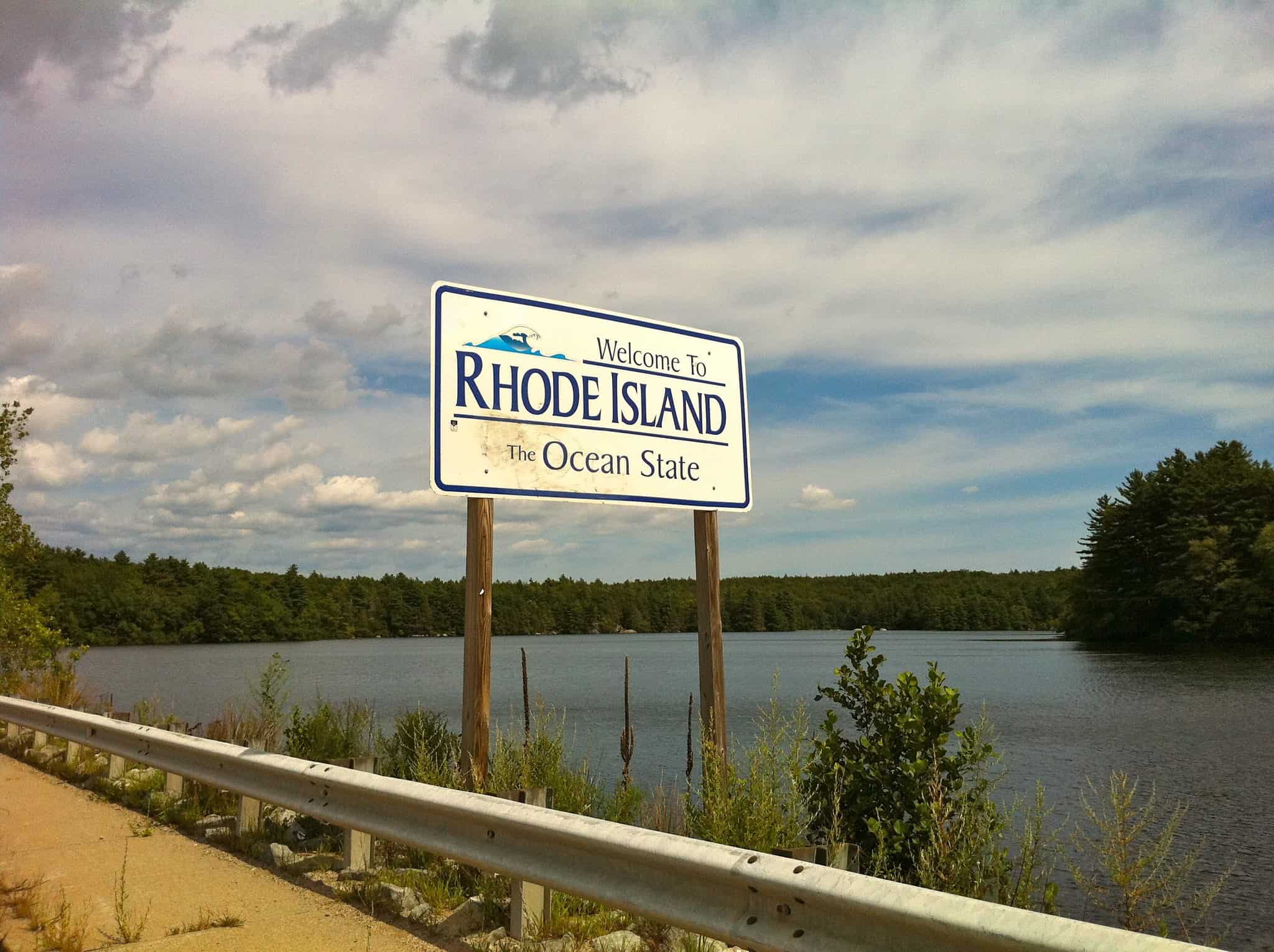Rhode Island gardeners excited about growing their fruits and vegetables this spring need to wait for the right time to plant. Although the state is relatively mild and doesn’t experience a ton of extreme weather, there are some considerations to make along the way. Today, we will discuss the typical temperatures, some potential issues to consider, and tips to help your garden thrive in 2023.
Rhode Island Typical Climate Conditions

Rhode Island is green and humid during the spring and there is a good chance of precipitation.
©J. Stephen Lee/Shutterstock.com
The state of Rhode Island has a temperate continental climate that is moderately mild. The winters don’t get too cold. However, the summers can be quite hot and rainy. A major contributor to the climate is that Rhode Island is near the coastline. This geography leads to the possibility of severe hurricanes, westerly winds, and blizzards and storms are likely every year during the winter season.
Snow is not typically a threat outside of the winter season. With that said, the earliest snowfall ever recorded in Rhode Island occurred on October 19, 1972, in Providence. The latest first snowfall also occurred in Providence on December 29, 2015.
Rhode Island in Spring
The good news for Rhode Island gardeners is that the spring season is typically mild. The temperatures at this time average about 55-65 degrees, and the season can be rainy. Keep in mind that the climate can differ based on where you live. Residents in the southern part of the state can expect more precipitation and warmer temperatures.
The rainfall is the most significant consideration for Rhode Island gardeners. Here is what you can expect during the spring months:
- March will see seven days of precipitation and about 4.4 inches of rain overall.
- April may have 8 days of precipitation and 3.9 inches of rain overall.
- May typically gets 8 days of precipitation and 3.4 inches of rain overall.
Summer Month Expectations
During the summer, the temperatures get warmer but not overbearing. The average temp during this season is between 72-86 degrees Fahrenheit. July is the hottest month of the season. The summer season can also see a lot of rain and potential tropical storms. This is how the summer months can look:
- June can experience 7 days of rain or about 3.6 total inches.
- July can have 8 days of rain or about 3.4 total inches.
- August can have 7 days of rain which amounts to about 4.1 inches.
Once the Autumn months come around, the temperature begins to drop, typically reaching close to 50 degrees Fahrenheit by November. September has the fewest rain days.
Potential Issues This Spring
As the numbers show, you may have to deal with more rain than gardeners in other states, though it won’t get out of hand. In addition, because of the precipitation, you will also need to deal with some humidity, typically around 73% humidity, which can be considered muggy. On average, the most humid months are June, July, August, and September. It won’t affect your gardening too much, but you may be a bit uncomfortable. April is easier to endure as far as humidity, so consider that as prime gardening time.
Start After the Frost
It is also highly advised that Rhode Island gardeners wait until after the last frost of the year to plant a garden. A frost typically happens when temperatures dip below 23 degrees Fahrenheit. When that happens, the water vapor condenses out of the air and settles on your garden, and ice crystals form. The ice freezes the water inside the plant’s cells, so they burst, and the plant dies.
Since every year and every zip code is different, it is wise to refer to the Farmer’s Almanac to tell you when the last frost of the year will be for your area. However, for most of the state, you can expect the last frost to be around April 27. After that date, you can expect relatively smooth sailing.
Consider Seeding These Plants Indoors

Many herbs, including basil, do well in the typical Rhode Island climate.
©AN NGUYEN/Shutterstock.com
Since the weather can be slightly unpredictable for Rhode Island gardeners, it is a good idea to start seeding your plants indoors in a controlled environment. By doing so, you can get them primed and ready to go. Then, when the spring temperatures and conditions are just right, then you can transport the plants outdoors to your garden.
According to the Farmer’s Almanac, the plants that thrive the most in spring include:
Herbs
Basil – To thrive, basil needs a lot of sunlight (5-8 hours) to grow to its full potential. Soil should be fertile and moist, and the plant can do well in raised beds for better drainage.
Dill – As another plant that grows well in full sunlight, dill should also be protected from high winds because its tall foliage can easily be blown over. Find a planting sight that is rich in organic matter and soil that easily drains.
Parsley – Delicious in salads and soups, parsley also grows well in Rhode Island. Prep your parsley by planting it indoors in individual pots 6-8 weeks before the last predicted frost date. For the best growth potential, it should also be planted in an area with 6 hours of sunlight.
Sage – A hardy perennial, sage is a wonderful culinary herb. Plant it in full sun and well-draining soil because it typically will not tolerate wet soil. For the best chance of success, start sage as a small plant and sow seeds up to 2 weeks before the final frost date.
Vegetables
Arugula – The arugula plant does best in well-drained and nutrient-rich soil, but it can survive in other conditions. Give it a fighting chance by planting it in a raised bed, but it can also do well in a traditional garden bed.
Beets – A great cool-season crop, beets basically require full sun (at least 6 hours daily). Try to plant beets in early spring and make successive plantings every 2-3 weeks.
Bell Peppers – The bell pepper has a long growing season, often lasting 60-90 days. Grow your peppers in a place with tons of sun and moist but not overly wet soil. Sow the seeds indoors 8-10 weeks before the estimated final frost.
Broccoli – Like other area vegetables, Rhode Island gardeners must also ensure that broccoli gets 6-8 hours of sunlight. Typically a cool-season crop, you can grow it early to mid-spring. You can start the crops indoors or outdoors after the last frost.
Green Beans – Whether you are growing bush or pole beans, you will likely have success with this vegetable. Bush beans typically require less maintenance, but pole beans may yield more beans for longer. Whatever option you choose, put them in well-draining soil and set up pole bean supports before planting.
Kale – Since the temperatures can drop from time to time, consider planting kale, which is a hardy vegetable that can thrive in the cold. Kale is good for initial indoor seeding because it grows well in individual pots.
Peas – Another vegetable that does well in cold weather is peas. You can grow them during the winter and early spring. They also thrive when grown in a vertical garden.
Tips For Rhode Island Gardeners
Because of the possibility of rain during the spring season, Rhode Island gardeners can give their vegetables the best chance of success with these tips:
Proper Drainage is Key – Your plants need water, but you don’t want them to drown. Consider a vertical planting system or planting in raised beds to spread the water around.
Watch for Water Damage – You can’t control the rain, but you can ensure the health of your garden. After a rain, check out the plants. If the plant has been bent over from the force of the rain, then stake it back up, and it could continue to grow. If the stem has snapped, then the plant is likely a loss.
Don’t Walk on Wet Soil – If the soil around your plants is waterlogged, try to avoid walking on it. Doing so could compact the soil and damage the roots of the plants.
Conclusion
These are the main considerations that Rhode Island gardeners need to keep in mind when planting fruits and vegetables this spring. Use the resources above to have a healthy crop of vibrant vegetables and tasty herbs that you and your family will surely enjoy in 2023.
Thank you for reading! Have some feedback for us? Contact the AZ Animals editorial team.








